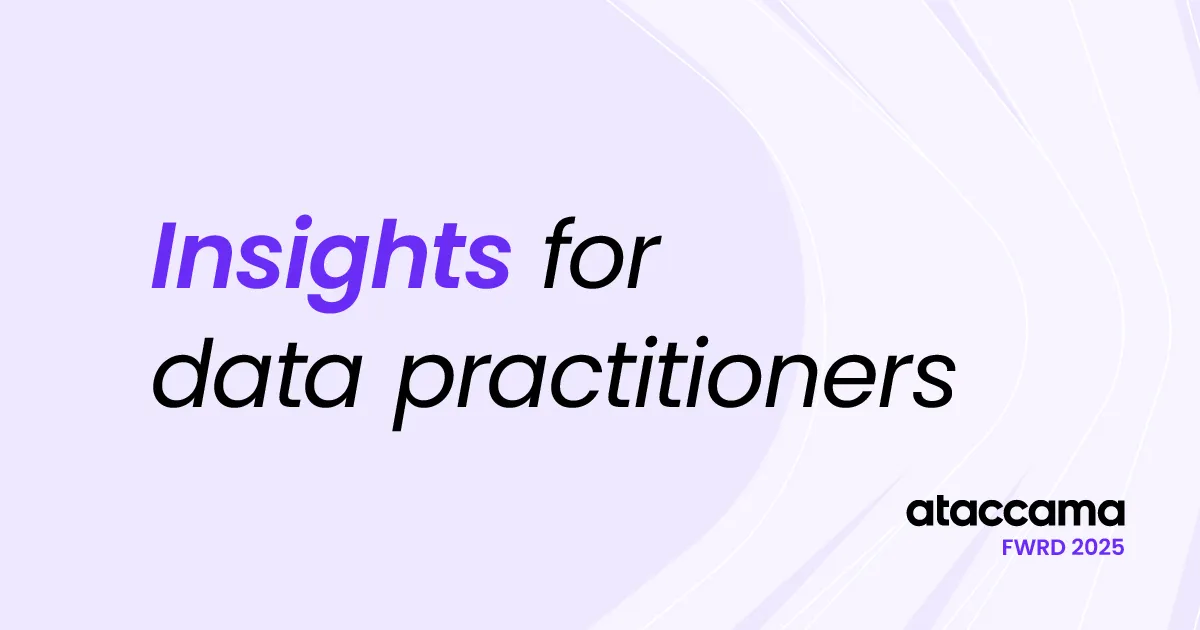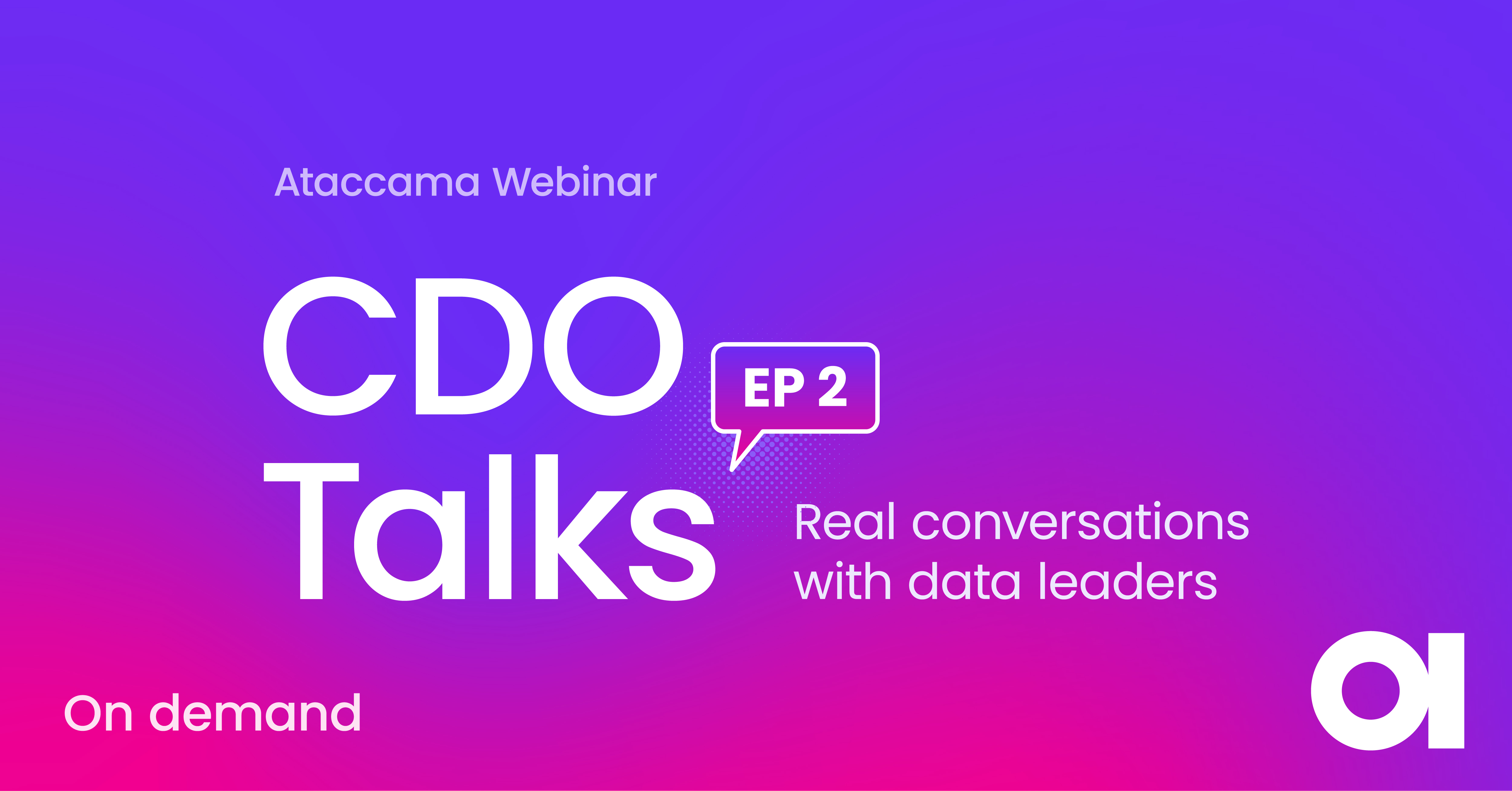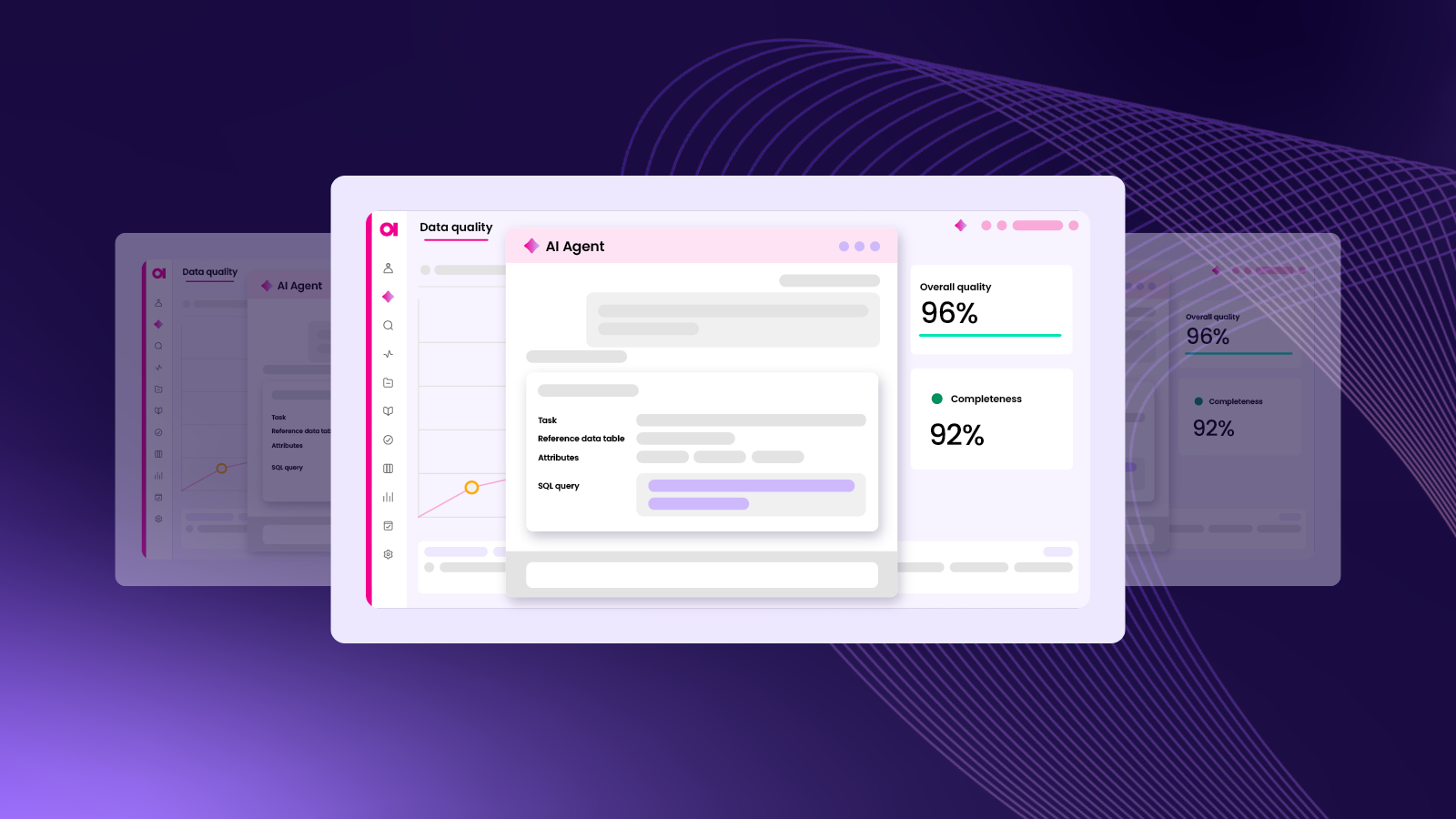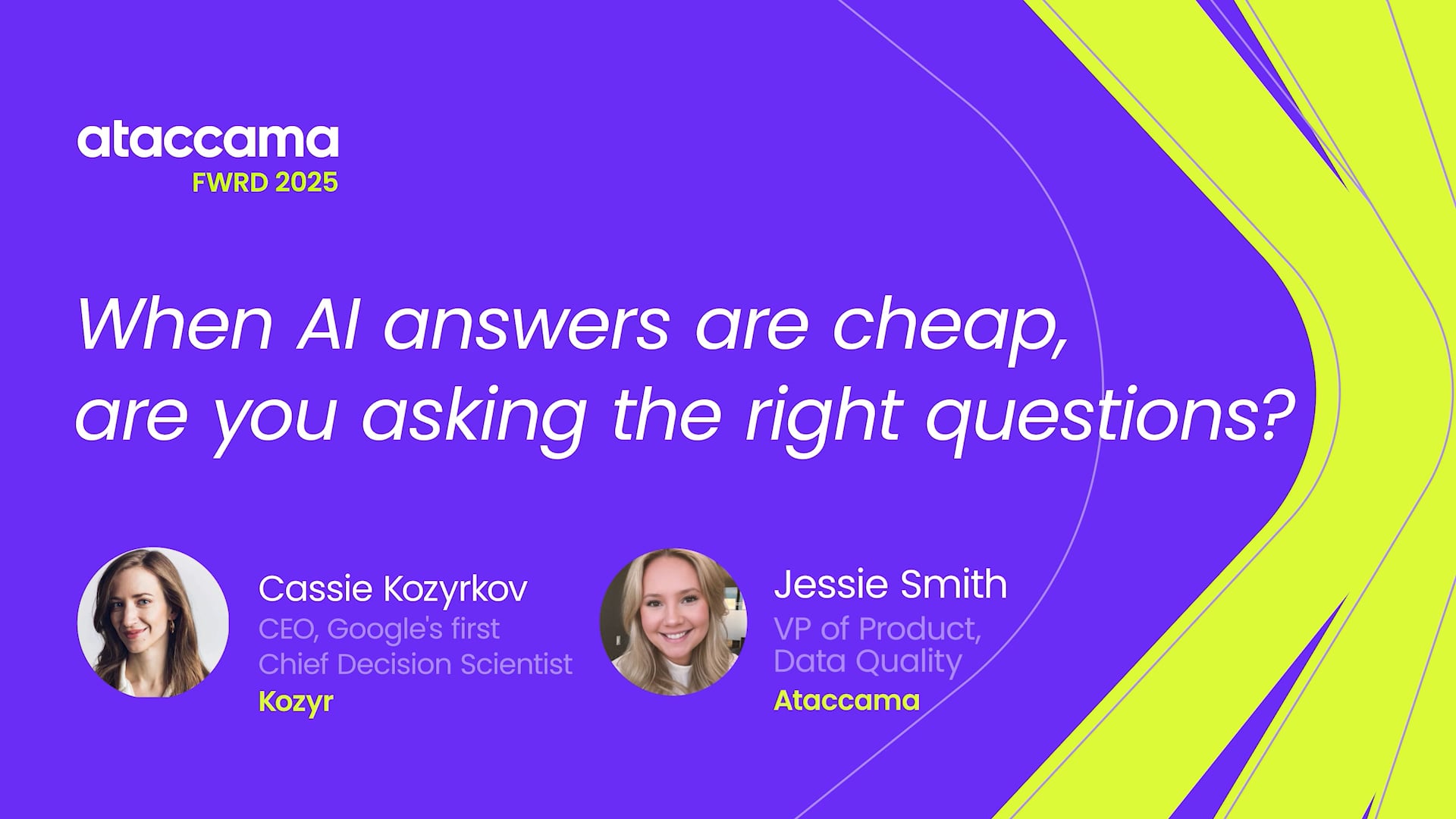What is data quality and why it’s important (Ultimate Guide)

Organizations know how important using their data effectively is to their long-term success. However, nearly 80% of data and analytics leaders say they don’t fully trust their data when making critical business decisions.
With the increase in the scale of data, ever-evolving regulations, and the pressure to implement effective AI initiatives, data quality has become mission critical. Without high-quality data, AI initiatives will fail. In fact, according to Gartner, 85% of AI projects fail due to poor data quality or irrelevant data.
This ultimate guide dives into the question, “What is data quality, and why is it important?” You’ll learn the importance of data quality, its benefits, and what to look for in a modern data quality solution.
What is data quality? | Data quality definition

While the definition of data quality seems straightforward, data quality in practice spans multiple processes and elements. It is best understood as an ongoing discipline that ensures data is accurate, reliable, and usable by individuals and organizations to support informed decision-making.
Why is data quality important?
High-quality data is one of the most valuable assets an organization can have. Without high-quality data, organizations risk basing important business strategies and decisions on inaccurate or incomplete data.
When data is well-managed and reliable, all your teams are empowered:
- Executives make strategic decisions with confidence.
- Marketing and sales target the right customers with relevant, timely offers.
- Operations streamline processes and reduce inefficiencies.
- Compliance teams meet regulatory requirements more easily.
To summarize the question of “why is data quality important to an organization?”, trustworthy and accurate data builds trust within an organization and supports better decision-making that strengthens business innovation, longevity, and profitability.
What are the business costs and risks of poor data quality?
If strong data quality drives value, poor data quality does the opposite. Bad data erodes trust, exposes organizations to unnecessary risk, and impacts the bottom line. Research shows that bad data costs companies an average of 31% of their revenue, and correcting data errors can run $1–10 per record.
Bad data should not be taken lightly as it poses significant risks and business costs. Here are some common consequences:
- Regulatory fines: Organizations in highly-regulated industries like banking, insurance, and healthcare risk penalties for inaccurate regulatory reporting.
- Non-compliant data: Data found to be non-compliant with regulations such as GDPR can trigger fines of up to €20M or 4% of annual turnover for organizations.
- Unreliable analytics and AI: Low-quality data produces flawed insights and weak machine learning models.
- IT project failure: Dirty data without proper mapping can derail modernization efforts.
- Poor customer experience: Inaccurate information prevents personalization and weakens service.
- Wasted marketing budget: Outdated or invalid customer data leads to failed campaigns and loss of trust.
- Operational mistakes: Bad data can cause costly errors, such as poor site selection or missed fraud.
In short, bad data poses a serious business risk.
What are the benefits of improved data quality?
Improving data quality delivers business value across every function. Here are some of the benefits that organizations see when they have high-quality data:
| Benefit | Real‑world impact |
|---|---|
| Regulatory compliance | Strong data quality helps avoid hefty fines by ensuring compliance with new and existing regulations. |
| Trustworthy analytics | Stakeholders can confidently use reports and dashboards because they trust the data underpinning them. |
| Higher marketing ROI | Clean, complete customer data improves email deliverability, targeting, and campaign performance. |
| Cost and time savings | Reducing errors and manual fixes saves organizations $1-10 per record. |
| Personalization at scale | Accurate data enables personalized offers that boost conversion rates and customer satisfaction. |
| Faster, smarter decisions | Leaders can act quickly and confidently with data they can trust. |
| Greater productivity | Data teams spend less time cleansing data and more time innovating and delivering business value. |
| Demand forecasting | Reliable data powers accurate models that predict demand and identify opportunities that can give your organization a competitive advantage. |
While the exact benefits from improved data quality will be unique to your business, the overall impact is unquestionable — leading to better business decisions that improve your organization’s long-term performance and resiliency.
What are the dimensions of data quality?
Data quality can be measured against six core dimensions: completeness, validity, timeliness, uniqueness, accuracy, and consistency. These six dimensions define what high-quality data looks like in practice, providing organizations a framework to measure and improve their data. We’ll explain each of these in more detail below:
Six dimensions of data quality – quick overview
| Dimension | What it answers | Example |
|---|---|---|
| Completeness | Are all required values present? | Phone and email both captured for billing. |
| Validity | Does each value follow the correct format or range? | Postal code matches country pattern. |
| Timeliness | Is the data available when needed? | Sales figures are refreshed hourly. |
| Uniqueness | Are there duplicates? | One order ID = one record. |
| Accuracy | Does the data reflect reality? | GPS coordinates match the store location. |
| Consistency | Does data agree across systems? | Same customer status is in the CRM and ERP. |
1. Completeness
Completeness ensures that all required data is present within a data set. For example, if the billing department requires both a phone number and an email address, then any record missing one or the other can be considered incomplete. You can also measure completeness for any particular column. Profiling your data will uncover these gaps.
2. Validity
Validity checks verify that data conforms to a particular format, data type, and range of values. For example, this could mean making sure that in your database, postal code records are in a valid format or that email addresses follow the right structure.
Valid data is also important for automation, because data has to be valid to be accepted by the processes and systems that expect it.
3. Timeliness
Timeliness measures whether data is up to date and available when needed. Some data only needs to be refreshed quarterly, like financial reporting, whereas other data might need to be updated in near real time, like customer transaction data. Outdated data is a risk and can lead to poor decisions.
4. Uniqueness
Uniqueness measures how much duplicate data there is in a given data set, either within a particular column or as whole records. For example, you may have the same customer recorded twice or have two records with the same order ID. This could lead to a poor customer experience if the customer is sent multiple emails with the same offer.
5. Accuracy
Accuracy, perhaps the most important data quality dimension, refers to the number of errors in the data. In other words, it measures how closely recorded data represents the truth. Even if data is complete, valid, timely, and unique, it may still be inaccurate. A mistyped address or an outdated job title are common examples.
While 100% accuracy is an aspirational goal, strong data quality practices combined with the principles of data governance help to prevent errors and ensure that data does not degrade.
6. Consistency
Consistency ensures that data is uniform across systems and records. For example, if one system lists a customer’s address as Boston and another lists it as Chicago, that is inconsistent data. Inconsistent data undermines trust and leads to reporting errors and poor customer experiences.
Learn more about data quality metrics you can track to improve your overall data quality.
Building an effective data quality program
Watch this on-demand webinar to learn best practices from our experts.
What to look for in a data quality solution
As data environments grow more complex and data leaders are asked to do more with less, it’s important to know what to prioritize in a solution. When evaluating solutions, look for one that supports scalable, end-to-end data quality management and AI-powered automation, delivered via a unified, natively-built platform.
Top 3 must-haves in a data quality solution
| Must-have in a data quality solution | What to look for |
|---|---|
| Scalable, end-to-end data quality | – Centralized, reusable rules library – Multi-environment execution where rules can be applied across cloud and on-premises systems – Pushdown and edge processing, which can be combined seamlessly across multiple environments – Ability to fix data issues with automated cleansing, standardization, enrichment, and integrated remediation workflows – Ability to prevent issues with data quality in pipelines and in the source systems |
| Automated intelligence | – AI-powered features that accelerate rule creation, generate test data, and apply rules in bulk – ML-powered data profiling, classification, and anomaly detection |
| Unified platform built in house | – Data catalog, data lineage, data observability, and reference data management capabilities — all natively built into one platform – One consistent UX across all capabilities |
Here is additional detail on the three must-haves:
1. End-to-end data quality that scales
The right solution allows you to manage data quality across vast and varied data environments. You should be able to create data quality rules once and apply them across all sources, for data at rest and in real time.
It should also support end-to-end data quality — from profiling and monitoring to cleansing, standardization, and enrichment. Many solutions don’t cover end-to-end data quality, stopping at just identifying data quality issues. They show you what’s broken, but they don’t provide tools to fix the data issues. The real value of a data quality solution comes from its ability to fix data — going beyond identification to include remediation — enabling organizations to both measure and improve data quality at scale.
2. Automated intelligence
Manual processes can’t keep up with the speed and scale of modern data. Look for a solution that uses AI to accelerate rule creation, generate test data, and apply checks in bulk. This reduces manual effort, speeds up implementation, and frees teams to focus on higher-value, strategic work.
Additionally, a solution with built-in profiling, classification, and anomaly detection can surface patterns, detect anomalies, and suggest business terms, delivering valuable context to help users better understand and use data effectively.
3. A unified platform built in house
The strongest solution brings data quality together with catalog, lineage, observability, and reference data management in a single, natively-built platform. This unified approach breaks down silos, improves collaboration between business and technical teams, and creates a consistent user experience.
A unified platform also supports growth. You can start with your highest priority use case and then expand across programs and lines of business, accelerating time-to-value while building a long-term foundation.
When evaluating data quality solutions, look for those that are scalable, end-to-end, AI-powered, and delivered via a unified platform. A solution with these characteristics ensures that you can improve data quality today and sustain it as your business and data needs evolve. Learn more about the essential capabilities of data quality management.
Data quality FAQ
If you want to know more, here are some frequently asked questions about the importance of data quality.
1. What is data quality vs data integrity?
While the two are often used interchangeably, there is a clear difference between data quality and data integrity.
Data Quality focuses on six dimensions of data quality to ensure that data is reliable, accurate, and valuable to the recipient. Those dimensions of data quality are: completeness, validity, timeliness, uniqueness, accuracy, and consistency.
Data Integrity focuses mostly on the dependability and security of data. The physical integrity of “data integrity” focuses on security measures and access controls to prevent data corruption by unauthorized parties.
2. Can the data catalog and data quality work together?
Yes! Monitoring your data quality is much more efficient and accessible when integrated with your data catalog. More specifically, you can automate data quality workflows using the metadata from the data catalog.
Other benefits include automating monitoring, improving discovery, streamlining evaluations, simplifying preparation, and uncovering root causes.
3. What is a real-world example of bad data quality affecting analytics?
One of the most common examples is census analysis, where paper and digital entries often create duplicates or unreadable inputs. These data sets require profiling, standardization, enrichment, matching, and consolidation before being fit for analysis.
4. How do I get started with data quality improvement and management?
Data quality management can seem like a bit of a daunting task. Follow the steps below on how to get started with data quality management.
- Determine your current goals and scope
- Profile your data
- Fix the most urgent issues
- Define metrics to measure quality
- Monitor problems
- Scale across teams and systems
5. How important is data quality for successful AI implementations?
Data quality is essential for AI success. Too much time spent preparing poor data makes AI costly. Success comes from profiling, evaluating, and monitoring data regularly. Otherwise, models are built on the wrong data sets. Learn about fueling AI success with trusted data in this on-demand webinar.
6. Where is data quality headed in the future?
Data quality is undoubtedly here to stay, but what kind of innovations can we expect in the future? You can expect greater automation, stronger integration with data fabric and mesh, expanded scope to include reference data and master data management, and tools evolving into unified solutions. More systems than people will consume data.
Improve your data quality with Ataccama ONE
Invest in enhancing your business’s data with the experts in the industry. Ataccama’s market-leading data quality solution makes it easy for you to reduce costs, regain valuable time, and increase data quality and accessibility across the organization.
Get in touch with our team today for more information on how you can get started or schedule a demo to see the platform in action yourself!
Not ready to jump in quite yet? Learn how we’ve helped support enterprise organizations like T-Mobile and Raiffeisenbank, and check out the rest of our customer success stories!







